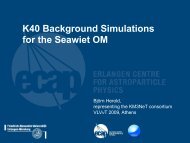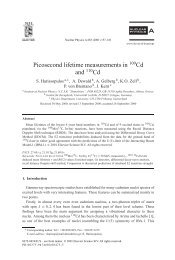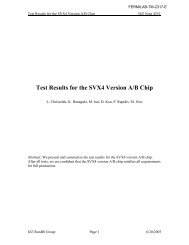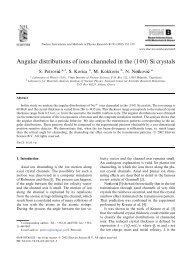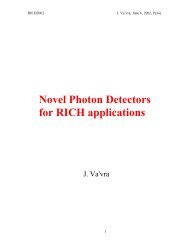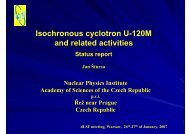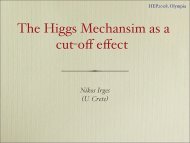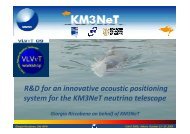Geomorphology and bottom sediments of the Pylos area
Geomorphology and bottom sediments of the Pylos area
Geomorphology and bottom sediments of the Pylos area
You also want an ePaper? Increase the reach of your titles
YUMPU automatically turns print PDFs into web optimized ePapers that Google loves.
327<br />
Table I (continued)<br />
I 2<br />
Consists two pteropods layers (49-50 cm<br />
<strong>and</strong> 96-96,8 cm) with sharp boundaries<br />
98-132 Bluish-grey, light grey clay<br />
132-134 Light grey silt (foraminiferal layer)<br />
134-134,6 Light blue clay<br />
134,6-140 Dark greenish-grey clay<br />
Station AMK-2812, gravity corer<br />
(36°35.7'N, 2I°32.3'E, depth 3850m)<br />
0-8 Light brown calcareous mud<br />
8-10 Pteropods layer with sharp boundaries<br />
10-40 Dark greenish-grey laminated mud<br />
40-62 Light grey clay<br />
62-107 Greyish-brown to light brown clay with<br />
small spots, lenses <strong>and</strong> thin layers <strong>of</strong><br />
silt (foraminiferal detritus)<br />
107-115 Thin laminated clay, brown, green, light<br />
grey <strong>and</strong> grey with thin silty lamina in<br />
lower part<br />
115-128 Light greenish clay<br />
128-168 Dark grey mud with rare thin<br />
foraminiferal lamina<br />
Station AMK-2817, gravity corer<br />
(36°37.0'N, 2I°31.7'E, depth 3759m)<br />
0-10 Light brown calcareous mud<br />
10-12 Light brown clay<br />
12-13 Light grey calcareous (foraminiferal)<br />
silt



